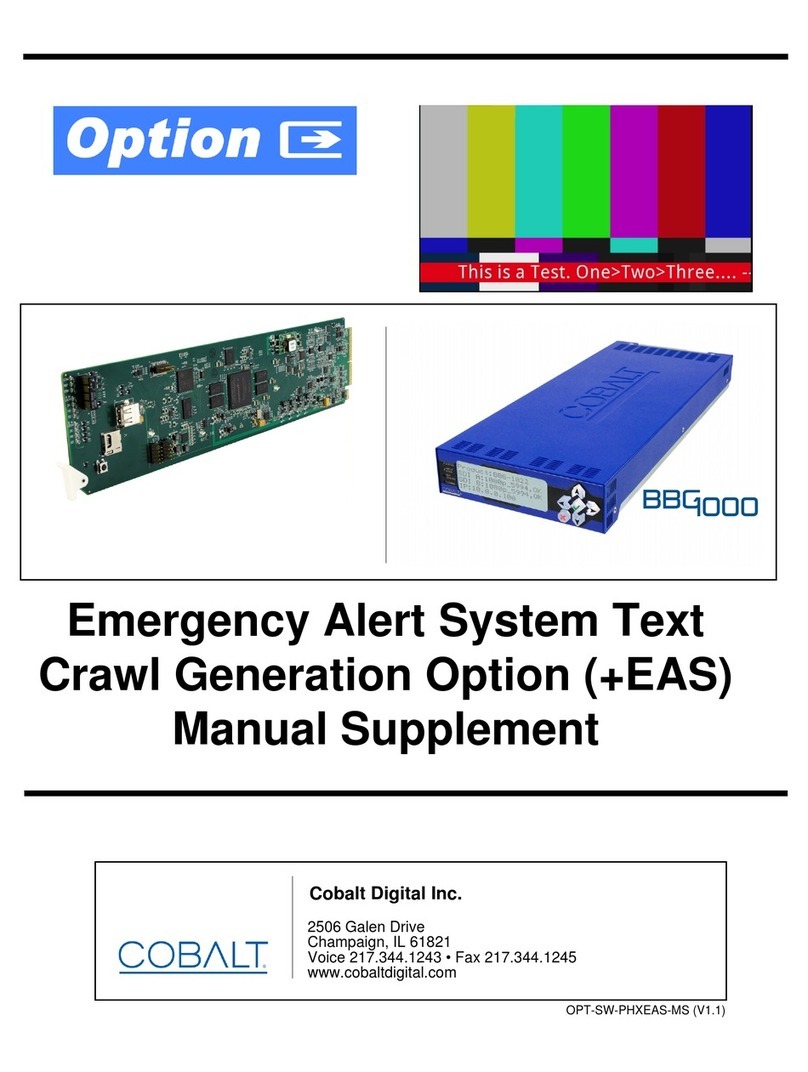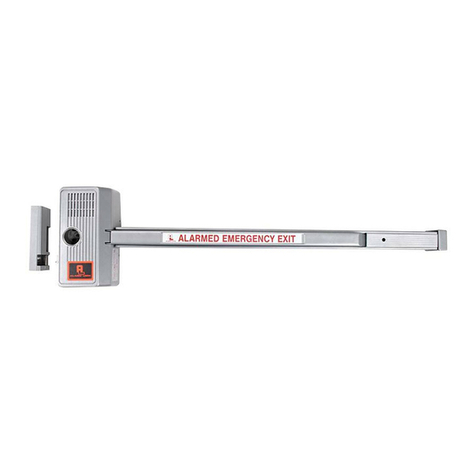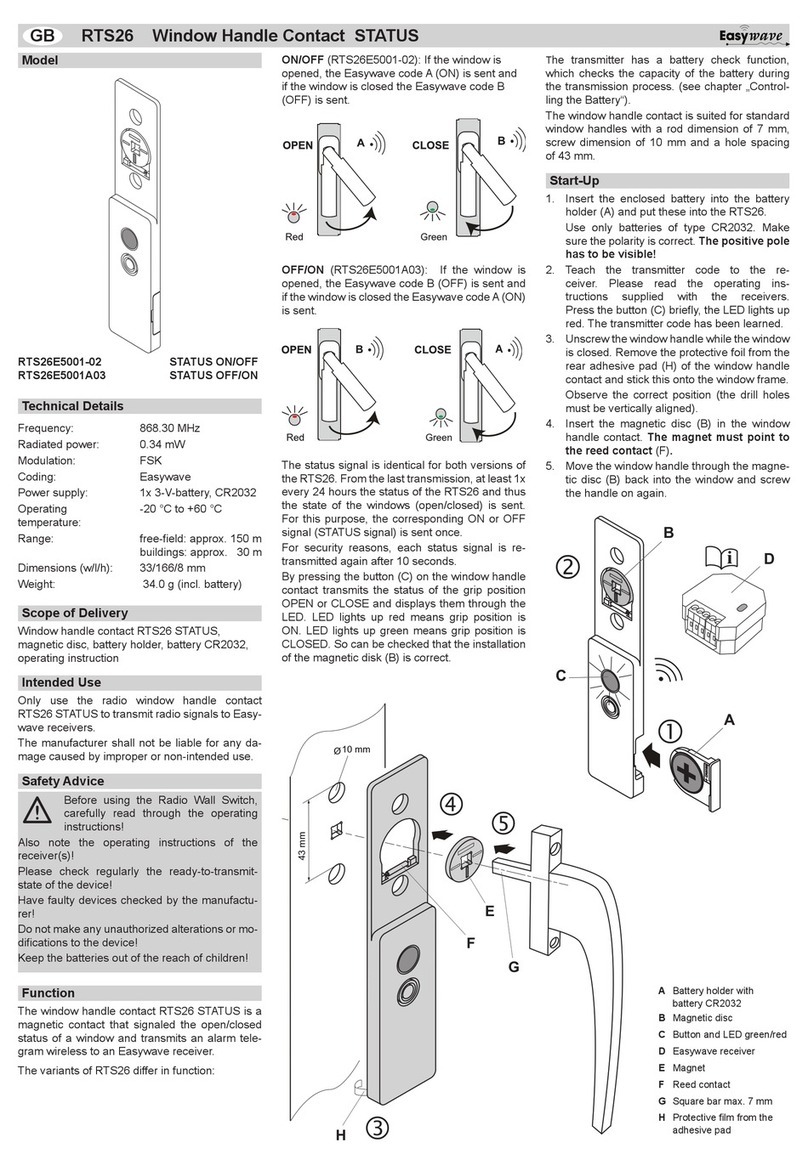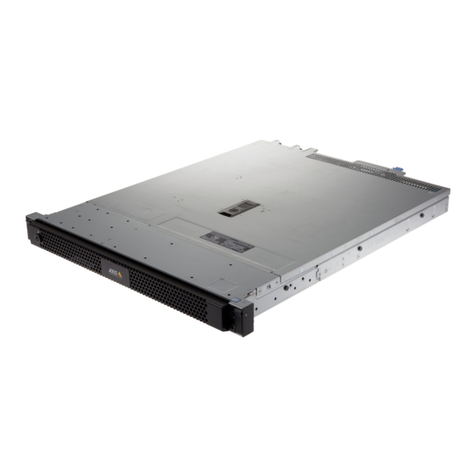Mercury Security SR10k User manual

Mercury Security ©2013 SR10k Doc. 10107-0007 Rev 1.08 Page 1
SR10k
Mag-Stripe Access System
Users Guide
www.mercury-security.com
2355 MIRA MAR AVE. LONG BEACH, CA 90815-1755, (562) 986-9105 FAX (562) 986-9205

Mercury Security ©2013 SR10k Doc. 10107-0007 Rev 1.08 Page 2
Table of Contents
Section Page
Overview 3
Quick Start and Configuration Planning 5
Programming Guide 6
Operating Mode Specifications 10
Mode 1: Basic Access Control with Door Monitoring 10
Mode 2: Restricted Access Control with Door Monitoring 11
Mode 3: Access Control and Alarm Panel Control 12
Mode 4: Restricted Access and Alarm Panel Control 13
Mode 5: "Supervisor" Controlled Restricted Access 14
Mode 6: "Two Door" Access Control 14
Mode 7: Access Control with "Door Bell" Feature 15
Mode 8: Dual Output Toggle on Valid Access 15
Installation 16
Maintenance 17
Specifications 17
Dimensions and Typical Configuration Diagrams 18
Mercury Security 2355 MIRA MAR AVE. LONG BEACH, CA 90815-1755
(562) 986-9105, FAX (562) 986-9205
www.mercury-security.com
This device complies with part 15 of the FCC Rules. Opera-
tion is subject to the following two conditions: (1) This device
may not cause harmful interference, and (2) this device must
accept any interference received, including interference that
may cause undesired operation.

Mercury Security ©2013 SR10k Doc. 10107-0007 Rev 1.08 Page 3
Description The SR10k is a complete stand-alone access controller, using either magnetic-stripe
cards or cipher (keypad) codes for identifying valid users.
The Card Reader with Keypad and the Interface Module are the SR10k system's ma-
jor components. Separating the door control and other interface connections not only
simplifiestheinstallation, but it greatly improvessecuritybyplacingthedoor strike relay
inside the protected area.
TheSR10k offersunparalleledversatiltiyin its class.The investment an installer makes
in learning the SR-10K is greatly rewarded by the number of different applications that
can be solved by the SR10k.
And cerainly not least, unlike other strictly stand-alone access controllers, the SR10k
supports expansion to multiple readers at a site.
Programming
AMaster Card places the SR10k into programming mode. Commands are entered via
the keypad on the SR10k reader. In some cases the entry of user cards may also be
required. Abuzzer and two bicolor LEDs provide immediate feedback to the operator.
Card Database Options
The SR10k supports three different card database modes:
1 - RANDOM mode, supports up to 100 users (factory default):
This mode allows the use of any magnetic stripe card with standard 'track-2' encod-
ing, such as the 'MS-SR10CC25', pre-encoded packs of 25 cards, or cards from
many other access systems, or even bank cards. Stores the first 10 digits of the
encoded card data.
Cards are added into 'user slots' by reading the card at the time of enrollment.
Individual or a block of 'user slots' may be deactivated.
2 - BLOCK mode, supports up to 1,600 users:
This database mode requires that all cards are encoded as a set. (Block orders are
typically shipped within a week of the order).Add-on orders can specify an existing
block number and a continuation point. The activation and deactivation of block
cards may be done without the cards and may be performed either individually or
in blocks.
3 - 'FACILITYCODE' mode, thereisno limit to the number of users supported,since
the SR10k is not checking for a unique code:
This mode is useful for low security applications where access cards are already in
use. The number of leading card digits to check is configured from zero to 9 digits.
Setting the number of card digits to check to 'none' causes the SR10k to accept
any magnetic stripe card as a valid user- also known as the ATM Mode, used to
accept 'any bank card'.
AnadditionalsettingallowstheSR10kto skip up to 15 card digits before assembling
the facility code. This feature is used in case the facility code does not start at the
beginning of the card.
OVERVIEW

Mercury Security ©2013 SR10k Doc. 10107-0007 Rev 1.08 Page 4
Cipher Codes
The SR10k supports up to 10 cipher codes. Each code is one to six digits in length -
shorter codes are terminated with the '#' key. Cipher codes, like cards, are assigned a
User Level, and like cards, may cause different output relay action depending on the
direction of the code entry. See the next two sections for more details.
User Levels Each card and cipher code is assigned a User Level from 1 to 3. The User Level, along
with the selected Operating Mode, determines the result of the card or cipher entry.
For example, Level 1 users cannot activate the door relay in some modes unless an
input sees a closed contact.
Operating Modes
The versatility of the SR10k is based on its ability to configure the function of its inputs
and relays to suit different applications.
The action performed on the door strike relay, for example, depends on the direction
of the card (or cipher code) entry, on the User Level, and possibly on the state of one
of the inputs. In addition, the color of the upper reader LED may display the status of
an external device connected to an input, such as an alarm panel's armed/disarmed
indicator.
An Operating Mode is a collection of these functions intended for a specific application.
The Operating Modes are described in detail later in this document.
Changing the Operating Mode resets the door strike, held open, and auxiliary relay
times to their default settings. See commands 31 through 34.
Multi-Reader Sites
Up to 16 SR10k's may be linked via a '2-wire' cable. Configuration, card, and cipher
code database settings can all be made at just one reader and copied to other SR10k's
usingsimplekeypadcommands.Modificationscan still be made ateachreaderincases,
for example, where the databases are not identical at every reader.
The data link uses the RS-485 interface standard, allowing the total cable run to extend
up to 4,000 feet. The devices must be connected in a 'daisy-chain' configuration. Install
the RS-485 termination jumper, J4, on the first and last units only.
This unique feature bridges the gap between complex computer-based integrated ac-
cesssystemsand the simpler, individually programmed stand-aloneaccesscontrollers.
Additional Information
1. The LED's on the interface board are defined as:
A = Heartbeat and reader status: Fast flash: normal. Slow flash: Reader
communication lost.
B = Flashes when there is activity on the RS-485 communication bus.
2. Jumper J3: not used.
3. Jumper J4: RS-485 termination, install on first and last units only on the communi-
cation bus, see communication wiring diagram.
OVERVIEW, continued

Mercury Security ©2013 SR10k Doc. 10107-0007 Rev 1.08 Page 5
Quick Start The factory default setting enables the SR10k to be used immediately, without any
further programming, using the 10 cards shipped with the unit. The database is set
to Random Mode, and the cards are enrolled as Level 1 users in slots 01 through 10.
Additional cards are enrolled using Command 10, and Cipher codes may be added
using Command 15. Command 32 sets the door strike relay pulse time.
Configuration Planning
The most important selections are the Card Database Mode and the Operating Mode.
Card Database Mode Selection (Command 93)
The 'Random' Database Mode offers great versatility because it allows the use of just
about any magnetic stripe card. Leave the SR10k in this mode if the number of users
will not exceed 100.
On the other hand, select the 'Block' Card Database Mode right away if the number of
users may exceed 100, because changing database modes deletes all current entries.
Operating Mode Selection (Command 95)
Selectthe operating mode best suitedtotheparticularsite by evaluating the UserLevel
functions, the input and auxiliary output functions of each available operating mode.
The selected operating mode determines the installation wiring details and User Level
assignment.
Lost Master Card
Follow the steps outlined below to set a new Master Card in case the current Master
Card is lost:
- remove power from the SR10k
- install the jumper in position 8
- apply power for a few seconds, then remove it
- remove the jumper from position 8
- apply power to the SR10k: the old Master Card has been erased!
- add the Master Card using Command 91
(With no valid Master Card, the SR10k remains in the Programming Mode with the
lower LED set to amber, until a Master Card is set. In fact, only Command 91 is
accepted until the new Master Card is set.)
Interpreting the LED and Buzzer Indicators
Normal operation - the upper LED is ON steady red or green:
The lower LED flashes green briefly following the entry of a valid card or ciper code.A
red flash along with three short beeps indicate an invalid entry attempt.
Programming mode - the lower LED is ON steady green (amber if no Master Card)
The upper LED is OFF if the SR10k is ready for a new command (wait for '*' key)
The upper LED flashes red while waiting for keypad data entry, and is flashing green
while waiting for card entry.
A single beep echoes a key entry, a double beep indicates the completion of a 'field'
(each line on the command spec section is a field). Three beeps indicate an error con-
dition. A long beep indicates proper completion of a command.
Quick Start and Configuration Planning

Mercury Security ©2013 SR10k Doc. 10107-0007 Rev 1.08 Page 6
SR10k Programming Guide
The COMMAND ENTRY MODE is selected by passing a valid MASTER card through the reader. The
intergral keypad allows direct data entry on the SR10k.
The "*" key is used to start a new command entry. The '#' key terminates field entry. For example, se-
lecting user slot 3 for the the 4-digit user slot entry in Command 20 can be entered as 4 digits: '0','0','0','3',
or it may be entered as '3', '#'.
A single short beep indicates the acceptance of a digit, a double beep indicates the acceptance of a
field. Three short beeps indicate that the command aborted due to an error. One long beep indicates
succesful completion.
Command 12 - Delete a card, using the card
* 1 2 - select Command 12
user card - read the card to be deleted from that slot
Command 13 - Delete a range of cards
* 1 3 - select Command 13
0-9 0-9 - select the first user number to delete: 00 to 99
0-9 0-9 - select the last user number to delete: 00 to 99
Command 11 - Delete a card, using the user slot
* 1 1 - select Command 11
0-9 0-9 - select the user number: 00 to 99
Command 10 - Add card(s)/Facility Codes
* 1 0 - select Command 10
1-3 - select the user level: 1, 2, or 3
0-9 0-9 - select the user number: 00 to 99
user card - read the card to be added in that slot
(user card - additional cards (same user level) will be added into successive slots)
* 0-9 # - any other action quits the "add loop"
RANDOM and Facility Code Database Mode Commands (Commands 10 through 13)
Use these commands to manage the card holders if the RANDOM database mode was selected
Command 93 set to mode "0" - this mode is the facory default.

Mercury Security ©2013 SR10k Doc. 10107-0007 Rev 1.08 Page 7
CIPHER CODES Related Commands (Commands 15 through 17)
Up to 10 cipher codes may be defined (user slots 0 through 9). Each cipher code may be from 1 to 6
digits long. Cipher codes shorter than 6 digits are terminated with the "#" key. Just like cards can pro-
duce different results when read "upward", cipher codes can be entered in the "reverse" direction. For
example, cipher code "123" entered as "3", "2", "1", "#" will produce the action specified for "reverse"
entry of a user having the User Level assigned to cipher code "123". See Operating Modes.
Command 20 - Add a card (activate a user)
* 2 0 - select Command 20
1-3 - select the user level (1, 2, or 3)
0-1 0-9 0-9 0-9 - enter the user slot to activate (0000 through 1599)
Command 21 - Delete a card (deactivate a user)
* 2 1 - select Command 21
0-1 0-9 0-9 0-9 - enter the user slot to deactivate (0000 through 1599)
Command 22 - Add a range of cards (block activate)
* 2 2 - select Command 22
1-3 - select the user level (1-3)
0-1 0-9 0-9 0-9 - enter the first user slot to activate (0000 through 1599)
0-1 0-9 0-9 0-9 - enter the last user slot to activate (0000 through 1599)
Command 23 - Delete a range of cards (block deactivate)
* 2 3 - select Command 23
0-1 0-9 0-9 0-9 - enter the first user slot to delete (0000 through 1599)
0-1 0-9 0-9 0-9 - enter the last user slot to delete (0000 through 1599)
Command 15 - Add Cipher Code(s)
* 1 5 - select Command 15
1-3 - select the user level: 1, 2, or 3
0-9 - select the user number: 0 to 9
0-9 ( 0-9 )# -enter a1 to6digitciphercode,endwith'#'ifshorterthan6digits
0-9 (0-9)# - additional codes (same user level) will be added into successive slots
# - any other action quits the 'add loop'
Command 16 - Delete a Cipher Code
* 1 6 - select Command 16
0-9 - select the user number to delete: 0 to 9
Command 17 - Delete a range of Cipher Codes
* 1 7 - select Command 17
0-9 - select the first user number to delete: 0 to 9
0-9 - select the last user number to delete: 0 to 9
BLOCK Database Mode Commands (Commands 20 through 23)
Use these commands to manage the card holders if the BLOCK database mode was selected
(Command 93 set to mode "1"). The block number is set by Command 94.

Mercury Security ©2013 SR10k Doc. 10107-0007 Rev 1.08 Page 8
Command 33 - Set the Auxiliary Relay Pulse Time (Output K2) (default 2.5 seconds)
* 3 3 - select Command 33
0-9 0-9 - select the pulse time for Output K2: 00 to 99 seconds (+1/2 second)
Configuration Settings (Commands 31 through 34)
Command 32 - Set the Door Strike Relay Pulse Time (Output K1) (default 4.5 seconds)
* 3 2 - select Command 32
0-9 0-9 - select the strike pulse time: 00 to 99 seconds (+1/2 second)
Command 34 - Set the Auxiliary Relay's Pulse Time (Output K2)
* 3 4 - select Command 34
1 or 2 - select the pulse type: 1 for normal, 2 for intermittent output
Configuration and Database Copy Commands (Commands 41 through 44)
The following commands allow the configuration and database to be copied from one SR10k to an-
other SR10k. These commands transfer the selected database elements from the SR10k where the
command is being entered to the SR10k whose address is specified in the command.
TheSR10kaddresses are setbyinstalling the jumperpatternfor the desiredaddress on theInterface
Module as shown on the installation diagram.
The color of the upper LED is set to flashing amber for the duration of the data transfer. Periodic
short beeps are used by longer transfers to indicate "transfer in progress". The transfer of the entire
"block mode" card database (1,600 users) may take up to 1 minute.
The completion of a successful transfer is indicated with the "long-beep".Atransfer error condition is
signalled with three short beeps along with a red flash on the upper LED. A transfer error is caused
by either incorrect wiring, or by incorrect jumper settings. Notice: the transfer commands are not
'broadcast'; each SR10k must be set to a unique address 0 to 15. If the SR10k receiving configura-
tion setting does not have a master card defined, a master card must be defined at that SR10k.
Command 42 - Copy the Cipher Database only
* 4 2 - select Command 42 - copies cipher users 0 through 9
0-9 0-9 - select the address of the SR10k to copy the data to - 00 to 15
Command 43 - Copy the Card Database only
* 4 3 - select Command 43 - copies users 00 through 99, or through 1599
0-9 0-9 - select the address of the SR10k to copy the data to - 00 to 15
Command 44 - Copy ALL: Configuration Settings, Card and Cipher databases
* 4 4 - select Command 44 - combines Commands 41, 42, and 43
0-9 0-9 - select the address of the SR10k to copy the data to - 00 to 15
Command 41 - Copy the Configuration settings only - no card or cipher databases
* 4 1 - select Command 41 (copies settings enterd with commands 31-34, and 91-95)
0-9 0-9 - select the address of the SR10k to copy the data to - 00 to 15
Command 31 - Set the Door Held Open Time (default 45 seconds)
* 3 1 - select Command 31 (from door opening to held open alarm)
0-9 0-9 - select the held open time: 00 to 99 seconds

Mercury Security ©2013 SR10k Doc. 10107-0007 Rev 1.08 Page 9
Command 91 - Set a New MASTER Card
* 9 1 - select Command 91
1 or 2 - select which Master Card to change: 1 or 2
new card - read the card to set as the new Master Card
Usage notes:
1 - The second Master Card slot is provided for administrative convenience in cases where the
owner does not wish to maintain the user database: The owner may retain one Master Card
and allow the installer to enroll his card as Master Card 2, thereby letting the installer update
the configuration without having to get the owner's Master Card.
2 - Multiple SR10ks may be set to the same Master Card
System Configuration Settings (Commands 91through 95)
Command 92 - Delete MASTER Card 2
* 9 2 - select Command 92: deletes Master Card 2
Command 93 - Set the Database Mode
* 9 3 - select Command 93
0, 1, 2 or 3 - select the database mode: 0 = Random, 1 = Block, 2 = Facility Code,
3 = Facility Code with Offset (Skip [n] digits)
(0 to 9 - only if Facility Code modes: number of Facility Code digits to check )
(( 0-9 0-9 - only if Facility Code with Offset: number of digits to skip - 00 to 15 ok ))
Usage notes:
1 - Changing the card Database Mode clears the card database.
2 - Commands 10 through 13 are used with the Random and Faciltiy Code Database Modes
3 - Commands 20 through 23 are used with the Block Database Mode
4 - The Block Number (Command 94) must be set for Block Database Mode operation.
5 - In Facility Code Database Mode, the digit count specifies the the number of card digits to read
and verify. For example, setting the count to '3', the SR10k uses only the first 3 digits on the
card. Further, setting the count to '0', the SR10k will accept any properly encoded card, regard-
less of the actual data on the card - this configuration is also called the 'ATM Mode'.
In the 'ATM Mode', at least one card must be enrolled in the database. Use
command 10 to enroll a card.
6 - In Facility Code Database Mode, one card must be enrolled for each 'facility code' that is to be
accepted. The cards are enrolled using Command 10, 100 facility codes maximum.
Command 94 - Set the Block Number
* 9 4 - select Command 94 - required to set if Block Database Mode is used
any user card - read any user card from the current block
Command 95 - Set the Operating Mode
* 9 5 - select Command 95: determines input/output and user level functions
0-9 0-9 - select the Operating Mode: 01 through 06 (see manual for details)
01 - Basic access control with door alarm monitoring
02 - ...like mode 01, denies User Level 1 based on input contact
03 - Access control with pulsed auxiliary output control (alarm panel)
04 - ...like mode 03, restricts User Level 1 based on input contact
05 - Access control with toggled auxiliary output control
06 - Two-door control
07 - "Door Buzzer" option: *, or #, or REX pulses Output K2
08 - "Dual Output" toggle with restricted access of Level 1 users

Mercury Security ©2013 SR10k Doc. 10107-0007 Rev 1.08 Page 10
Description
Access Control with Door Monitoring provides for basic access control and door use an-
nunciation.
A downward read of all valid User Cards pulse Output K1, the strike control relay.
The upward read of a Level 2 card toggles the strike control relay, in effect performing a
lock/unlock function. The upward read of a Level 1 card will release an unlocked condi-
tion.
Output K2 is pulsed to annunciate improper door use, such as
a) Forced Open condition, which occurs if the door opening was not preceded by the use
of a valid card or an exit request, or
b) Held Open condition, which occurs if the door is kept open longer than the preset open
time.
User Level Specifications
User Level 1
A downward read will pulse Output K1 (no effect if the door is unlocked).
A upward read will turn off Output K1, ending an unlocked condition.
User Level 2 (and 3)
A downward read will pulse Output K1 (no effect if the door is unlocked).
A upward read will toggle the state of Output K1, locking or unlocking the door.
Configuration
Input assignments:
Input I1 is connected to a door contact: closed contact signifies a closed door.
Input I2 is connected to a “request to exit” button. Closing the contact initiates the
request.
Upper LED assignment:
The upper LED follows Output K1, the strike control output. Normally RED, the LED
turns GREEN when the door strike is energized (either the timed, or unlocked).
Notes
This mode is the factory set default. It represents the "classic" access controller model
due to the implementation of the door contact and the request to exit sensors and the
door alarm annunciator relay.
The 10 cards included in the original shipment are enrolled as Level 1 users. Be aware,
that if they are modified or any subsequent cards are added as Level 2 users, an up-
ward read will unlock the door - requiring another upward read (by any user Level) to
release the locked condition. Add Level 2 users only if the lock/unlock function is desired.
Operating Mode 01:
Access Control with Door Monitoring

Mercury Security ©2013 SR10k Doc. 10107-0007 Rev 1.08 Page 11
Description
RestrictedAccess Control with Door Monitoring restricts Level 1 user access based on the
status of Input I2 and provides door use annunciation on Output K2.
Level 1 cards are accepted only if the Input I2 sees a closed contact. Level 2 or 3 cards are
not dependent on Input I2.
A downward read of all valid User Cards pulse Output K1, the strike control relay.
The upward read of a Level 2 card toggles the strike control relay, K1, in effect perform-
ing a lock/unlock function. The upward read of a Level 1 card will release an unlocked
condition.
Output K2 is pulsed to annunciate improper door use, such as
a) Forced Open condition, which occurs if the door opening was not preceded by the use
of a valid card or an exit request, or
b) Held Open condition, which occurs if the door is kept open longer than the preset open
time.
User Level Specifications
User Level 1
A downward read will pulse Output K1 only if Input I2 is closed.
A upward read ends an unlocked condition, regardless of the status of Input I2.
User Level 2 (and 3)
A downward read will pulse Output K1 (no effect if the door is unlocked).
A upward read will toggle the state of Output K1, locking or unlocking the door.
Configuration
Input assignments:
Input I1 is connected to a door contact: closed contact signifies a closed door
Input I2 is connected to the access control control contact, such as an external timer.
User Level 1 cards are accepted only when a closed contact is presented to this input.
Upper LED assignment:
The upper LED follows Input I2, the Access Control Input:
Open Contact is displayed as RED
Closed Contact is displayed as GREEN.
Notes This mode is very similar to Operating Mode 1. The same caution should be observed
regarding the ability to permanently unlock the door:
The 10 cards included in the original shipment are enrolled as Level 1 users. Be aware,
that if they are modified or any subsequent cards are added as Level 2 users, an up-
ward read will unlock the door - requiring another upward read (by any user Level) to
release the locked condition. Add Level 2 users only if the lock/unlock function is desired.
Consider using Operating Mode 4 or 5 if restricted access is required, but the un-
lock function is not.
Operating Mode 02:
Restricted Access Control with Door Monitoring

Mercury Security ©2013 SR10k Doc. 10107-0007 Rev 1.08 Page 12
Operating Mode 03:
Access Control and Alarm Panel Control
Description
The Access Control and Alarm Panel Control configuration provides for basic access con-
trol and gives some users the ability to send a pulse to arm and disarm alarm panels.
Both a downward and an upward read of all User Cards pulse Output K1, the strike con-
trol relay, to allow entry. In addition, the upward read of a Level 2 card pulses Output K2,
allowing the momentary closure to simulate a key-switch input to an alarm panel.
User Level Specifications
User Level 1
Both downward and upward read will pulse Output K1.
User Level 2 (and 3)
A downward read will pulse Output K1
An upward read will pulse both Output K1 and Output K2.
Configuration
Input assignments:
Input I1 is connected to the armed/disarmed status output from the alarm panel.
Input I2 is connected to a “request to exit” button. Closing the contact initiates the
request.
Upper LED assignment:
The upper LED follows Input I1, displaying the status of the alarm panel:
Open Contact is displayed as RED
Closed Contact is displayed as GREEN

Mercury Security ©2013 SR10k Doc. 10107-0007 Rev 1.08 Page 13
Operating Mode 04:
Restricted Access Control and Alarm Panel Control
Description Restricted Access Control and Alarm Panel Control provides restricts Level 1 user access
basedonthestatusofInputI2anditgivessomeuserstheabilitytoarm/disarmalarmpanels.
Level 1 users are accepted only if Input I2 sees a closed contact. Level 2 or 3 users are
not dependent on Input I2.
Both a downward and an upward read of all valid users pulse the strike control relay. In ad-
dition, the upward read of a Level 2 card pulses Output K2, allowing the momentary closure
to simulate a key-switch input to an alarm panel.
User Level Specifications
User Level 1
Cards having this User Level are rejected if the contact on Input I2 is open. If the contact
on Input I2 is closed:
Both downward and upward read will pulse Output K1.
User Level 2 (and 3)
A downward read will pulse Output K1, allowing entry.
An upward read will pulse both Output K1 and Output K2.
Configuration
Input assignments:
Input I1 is connected to the armed/disarmed status output from the alarm panel.
Input I2 is connect to an external timer and functions as the access control input.
User Level 1 users are valid only when a closed contact is presented to this input.
Upper LED assignment:
The upper LED follows Input I1, displaying the status of the alarm panel:
Open Contact is displayed as RED
Closed Contact is displayed as GREEN

Mercury Security ©2013 SR10k Doc. 10107-0007 Rev 1.08 Page 14
Operating Mode 05:
"Supervisor" Restricted Access Control
Description ThismodeallowsLevel2cardstotoggleOutputK2,which,connectedbacktoInputI2,restricts
Level 1 users. In this mode, Level 1 cards are accepted only if Input I2 sees a closed contact.
User Level Specifications
User Level 1
Cards having this User Level are rejected if the contact on Input I2 is open. If the contact on
Input I2 is closed:
A downward read will pulse Output K1.
User Level 2 (and 3)
A downward read will pulse Output K1, allowing entry.
An upward read will toggle Output K2.
Configuration
Input assignments:
Input I1 is connected to the request to exit (REX) contact.
Input I2 is connect to Output K2 and functions as the access control input. User Level
1 users are valid only when a closed contact is presented to this input.
Upper LED assignment:
The upper LED follows Input I2, displaying the status of the access control input:
Open Contact is displayed as RED
Closed Contact is displayed as GREEN
Operating Mode 06:
"Two-Door" Access Control
Description This mode allows User Level 1 cards to activate Output K1, User Level 2 cards to activate
Output K2, and User Level 3 cards to activate either Output K1 or Output K2.
User Level Specifications
User Level 1
Both downward and upward read will pulse Output K1.
User Level 2
Both downward and upward read will pulse Output K2.
User Level 3
Downward read will pulse Output K1.
Upward read will pulse Output K2.
Configuration
Input assignments:
The inputs are not used in this mode.
Upper LED assignment:
Output K1 off is displayed as RED,
Output K1 on is displayed as GREEN

Mercury Security ©2013 SR10k Doc. 10107-0007 Rev 1.08 Page 15
Operating Mode 07:
Access Control with Door Buzzer Control
Description
Access Control with Door Bell Control operates just like Mode 1, with an additional fea-
ture for using Output K2 for annunciation.
This mode was created for applications where Output K2 is configured to drive a door
bell/buzzer. A valid Level 1 user or a Request to Exit input activation will pulse Output K2
for about one second, creating the "buzz-in" sound.
Pressing the "*" or the "#" keys will act like a door bell. Pressing either "*" or "#" keys will
cause a double pulse on Output K2, creating a sound pattern easily distinguished from
the normal access or exit cycle.
Access by Level 2 users does not affect Output K2 - creating a "silent" entry.
Refer to Mode 1 description for full operational definition.
Description
This mode is intended for applications where the outputs need to be toggled, instead of the
standard momentary pulse operation. Both outputs are toggled.
Level 1 users alter the outputs only if Input I2 sees a closed contact.
The upper LED reflects the state of the outputs.
User Level Specifications
User Level 1
A read in either direction will toggle Output K1 and Output K2 only if Input I2 is
closed. (The outputs are not affected if Input I2 is open)
User Level 2 (and 3)
A read in either direction will toggle Output K1 and Output K2, regardless of the state
of Input I2.
Configuration
Input assignments:
Input I1 is not used.
Input I2 is connected to the access control control contact, such as an external timer.
User Level 1 cards are accepted only when a closed contact is presented to this input.
Upper LED assignment:
The upper LED follows Output K1 (and Output K2):
Deenergized output is displayed as RED
Energized output is displayed as GREEN.
Operating Mode 08:
Output Toggle on Valid Access

Mercury Security ©2013 SR10k Doc. 10107-0007 Rev 1.08 Page 16
DIODE 1N4001 (50V/1A) TYPICAL
Installation
Find a suitable location to anchor the reader mounting bracket. The mounting of the reader does not
require a junction box. However, rigid conduit is required for outdoor application.A single gang junc-
tion box may used to provide transition to rigid conduit. If a single gang junction box is used, a wall
plate (optional) may be used to cover the junction box. The reader is then secured to the mounting
bracket using a screw. Refer to figures for reader dimensions and typical junction box usage.
Connect door hardware/power according to the configuration selected. Wires of 22AWG or larger
are recommended for field wiring. See local electrical code.
DIODE SELECTION:
DIODE CURRENT RATING > 1X STRIKE CURRENT
DIODE BREAK DOWN VOLTAGE : 4X STRIKE VOLTAGE
Coat reader connector with the silicone grease supplied to seal off moisture for outdoor mounting.
To avoid havingESD (electrostaticdischarge) interferingwith theoperation ofthereader,thereader
casing shall be grounded. This can be accomplished be tying the mounting bracket to earth ground
locally (e.g. grounded conduit).
Reader DIP switch setting:
S1: 4 3 2 1 Factory Preset
OFF OFF OFF ON
S3: ON ON ON ON Factory Preset
Relay Contact Protection/Noise Suppression
Loadswitchingcancausecontact transfer, welding,andabnormalwear,whichcancausepremature
contact failure. The switching of an inductive load (strike) can also cause EMI (electromagnetic
interference). To prolong contact life and increase total system reliability, contact protection circuit
must be used. The following two circuits are recommended. For DC application, use a diode circuit;
for AC application, use a MOV (metal oxide varistor) circuit. Locate the protection circuit as close
to the load as possible, as the effectiveness of the circuit will decrease if it is located to far away.
As a guideline, the distance should be within 12 inches (30 cm). Mag Locks may have internal
noise suppression, please refer to the manufactures documentation. Mag Locks should be wired
to Output K1 normally closed (NC) terminal.

Mercury Security ©2013 SR10k Doc. 10107-0007 Rev 1.08 Page 17
FOR 24 Vac STRIKE, PANASONIC ERZ-C07DK470
Maintenance
The SR10k readers are designed to provide continuous service with minimal routine maintenance.
However, contaminants (such as magnetic oxides from badges and dirt) tend to accumulate on the
readhead.Without regular cleaning,thesecontaminants will shortentheread head lifeandincrease
the probability of card read error. A maintenance schedule should be developed base on the card
reader environment (dirty or clean) and the usage frequency (light traffic or heavy traffic). Extreme
case may require daily cleaning.
Headcleaning maybedone byusing disposable,pre-saturated magneticheadcleaningcard.These
cards are readily obtainable from a number of sources (e.g. Clean Team Co. 800-888-8830, www.
cleanteam.com; KIC Products, 207-514-7030, www.kicproducts.com; System ID, 1-888-648-4452,
www.systemid.com).
The reader exterior surface is covered with high strength polymer and polyester membrane. It may
be cleaned with a soft cloth and mild detergent if required.
Specification:
The reader/Interface are for use in low voltage, class 2 circuits only.
Electrical: Voltage - 12 Vdc (10.2 to 13.8 Vdc)
Current - 200mA
Relay contacts- K1, 5A@30Vdc; K2, 1A@30Vdc
Distance between reader/interface - 500' (152m) max., 22AWG
RS-485 Comm. Cable - 4,000' (1,219m) max. 24AWG, 120 ohm.
Mechanical: Reader:
Dimension 1.95" (50mm)W x 1.30" (33mm)H x 5.50" (140mm)L
Weight 10 oz. (284 g) nominal
Interface:
Dimension 4.25" (108mm)W x 2.75" (70mm)L x .75" (19mm)H
Weight 2.8 oz. (80 g) nominal
Environmental: Temperature: -55 to +85 degrees C, storage
-40 to +75 degrees C, operating
Humidity: Reader- 100% RHNC; Interface- 95% RHNC
MOV SELECTION:
VOLTAGE RATING > Vac RMS

Mercury Security ©2013 SR10k Doc. 10107-0007 Rev 1.08 Page 18
WARRANTY
Mercury Security warrants that the product is free from defects in material and workmanship under normal
use and service for two years from factory shipment. Mercury Security assumes no responsibility for prod-
ucts damaged by improper handling or installation. This warranty is limited to the repair or replacement of
the defective unit.
There is no expressed warranties other than set forth herein. Mercury Security does not make, intends,
nor does it authorize any agent or representative to make any other warranties, implied warranties, and
expressly excludes and disclaims all implied warranties of merchantability of fitness for a particular purpose.
Returns must be accompanied by a Return Material Authorization (RMA) number obtained form customer
service, a purchase order and prepaid postage.
LIABILITY
The card readers should only be used to control exits from areas where an alternate method for exit is avail-
able. This product is not intended for, nor is rated for operation in life-critical control applications. Mercury
Security is not liable under any circumstances for loss or damage caused by or partially caused by the mis-
application or malfunction of the product. Mercury Security's liability does not extend beyond the purchase
price of the product.

Mercury Security ©2013 SR10k Doc. 10107-0007 Rev 1.08 Page 19
Reader and Interface Dimensions
Reader to Interface Connection:
Connect the Reader to the Interface
Module using the straight 6-conduc-
tor modular cable. DO NOT use
cross-over cable. Maximum distance
between reader and interface is 500
feet using 22AWG wires.
Typical Wiring Configuration
Communication Wiring: Maximum total cable length - 4,000 ft [1,200 m], 24 AWG
JUMPER SETTING
Set each interface to unique address. Install RS-485 termination jumper, J4, on the first and last units only.
12345678
J2
TB1
GND
J3
TR-
TR+
VO
D0
DAT
GND
D1
LED
DAT
BZR
TB4
J4
BA
U1
J6
TB3
TB2
K2
K1
I1
I1
I2
I2
GND
VIN
C
NC
NO
C
NO
NC
K2K1
4.25 [108.0]
3.85 [97.8]
2.35 [59.7]
2.75 [69.9]
Ø.156 [Ø3.96]
.2 [5.08] .2 [5.08]
GND (BLK)
BZR (ORG)
LED (BRN)
CLK (WHT)
DAT (GRN)
12V (RED)
PIN 1
12345678
J2
TB1
GND
J3
TR-
TR+
VO
D0
DAT
GND
D1
LED
DAT
BZR
TB4
J4
BA
U1
J6
TB3
TB2
K2
K1
I1
I1
I2
I2
GND
VIN
C
NC
NO
C
NO
NC
K2K1
J2 JUMPERS
J4
J2 7
3
2
16
5
4
J3
8
TR+
TR-
GND
TB1
VO
DAT
D0
D1
J3
TR+
7
TB1
3
12
J2 456
GND
TR-
J4
8
D1
D0
DAT
VO
J3
VO
DAT
D0
D1
TR-
GND
2
TR+
J2 1
J4
TB1
6
5
4
38
7
C
TB2
I1
I1
C
GND
I2
I2
VIN
NO
NC
NO
TB3
NC
K1 K2
Table of contents
Popular Security System manuals by other brands

Xtralis
Xtralis ADPRO FastTrace 2 series installation manual
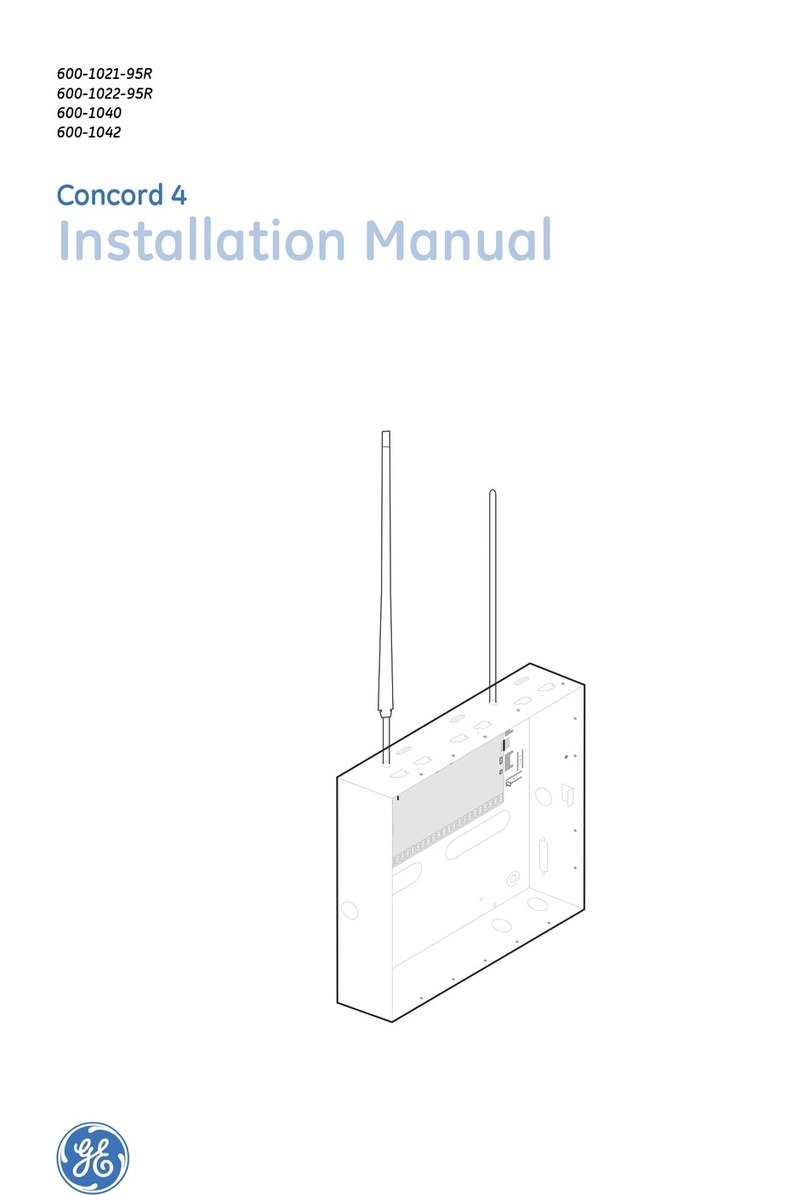
GE Security
GE Security Concord 4 installation manual
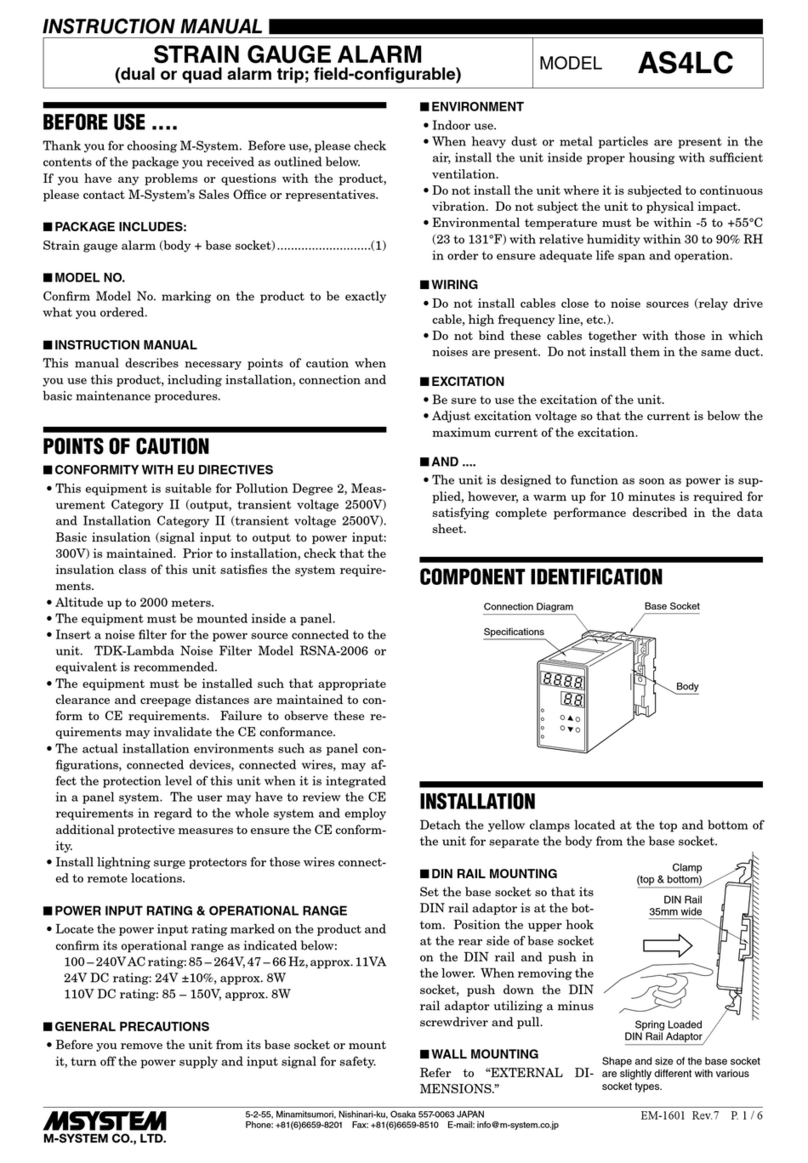
M-system
M-system AS4LC instruction manual
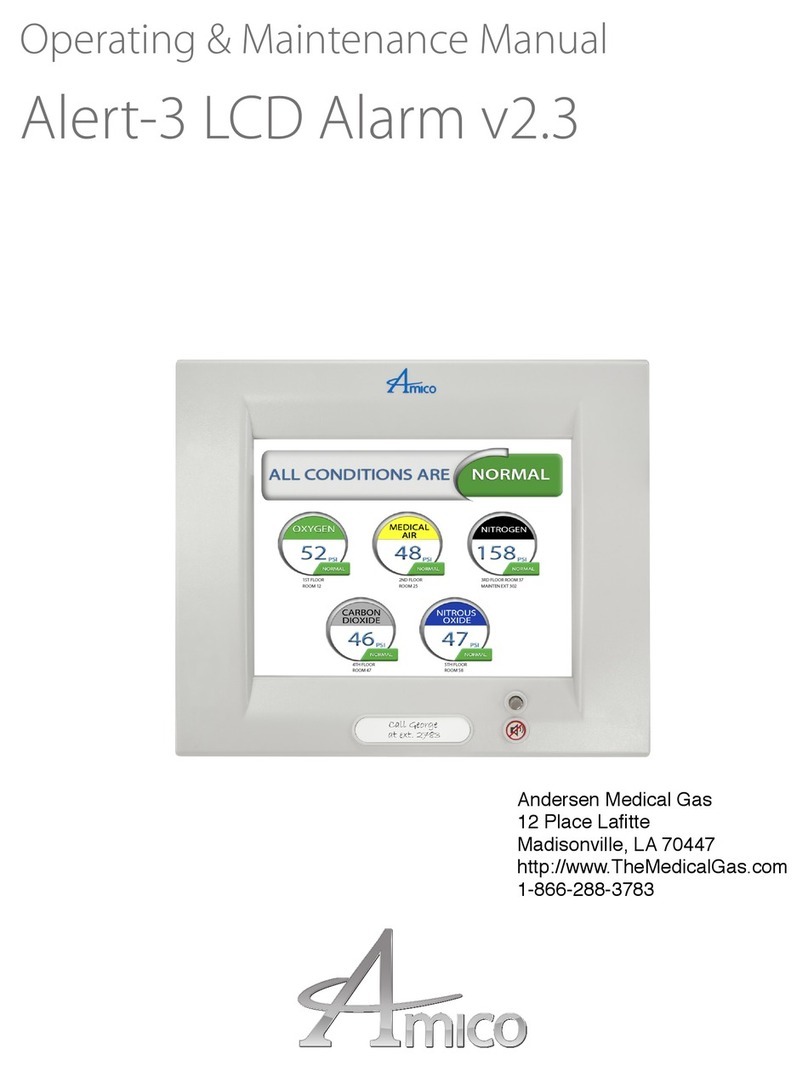
Amico
Amico Alert-3 LCD v2.3 operating & maintenance manual
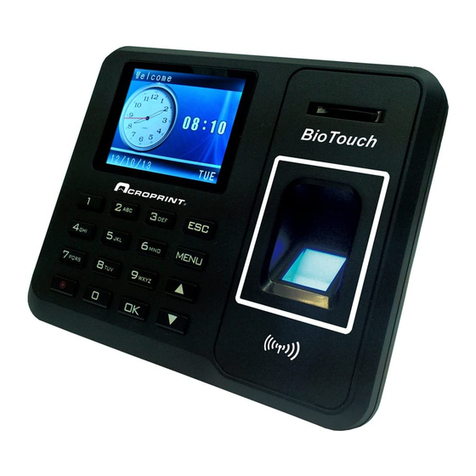
Acroprint
Acroprint BioTouch user manual
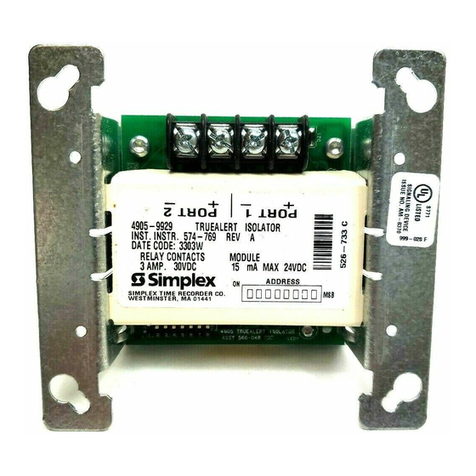
Simplex
Simplex TrueAlert Isolator+ installation instructions
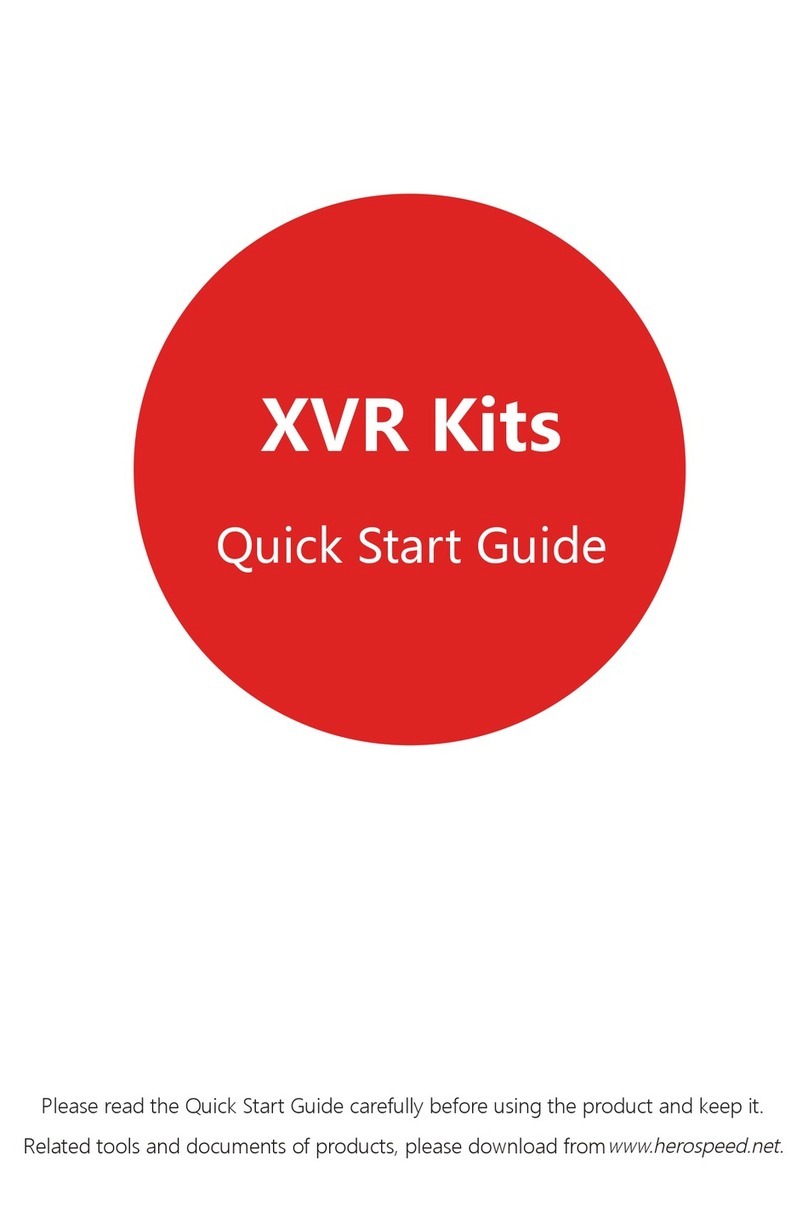
HeroSpeed
HeroSpeed XVR Kits quick start guide
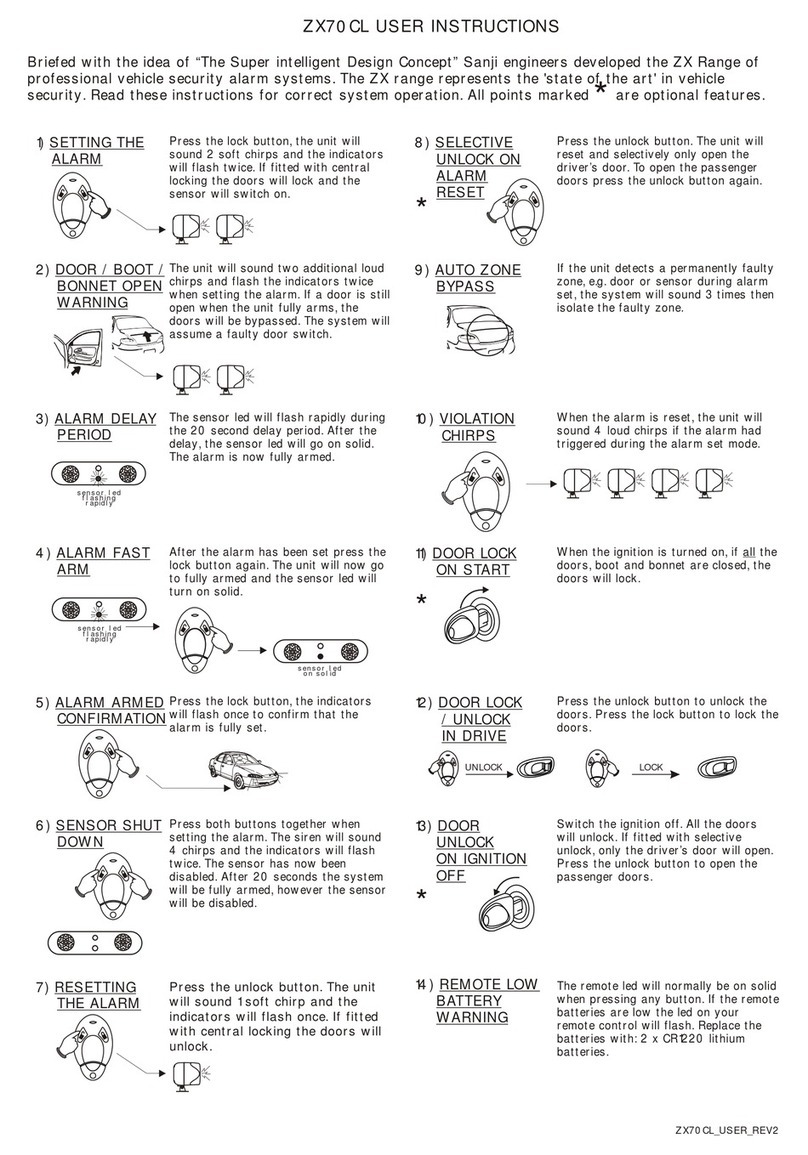
Sanji
Sanji ZX70CL User instructions
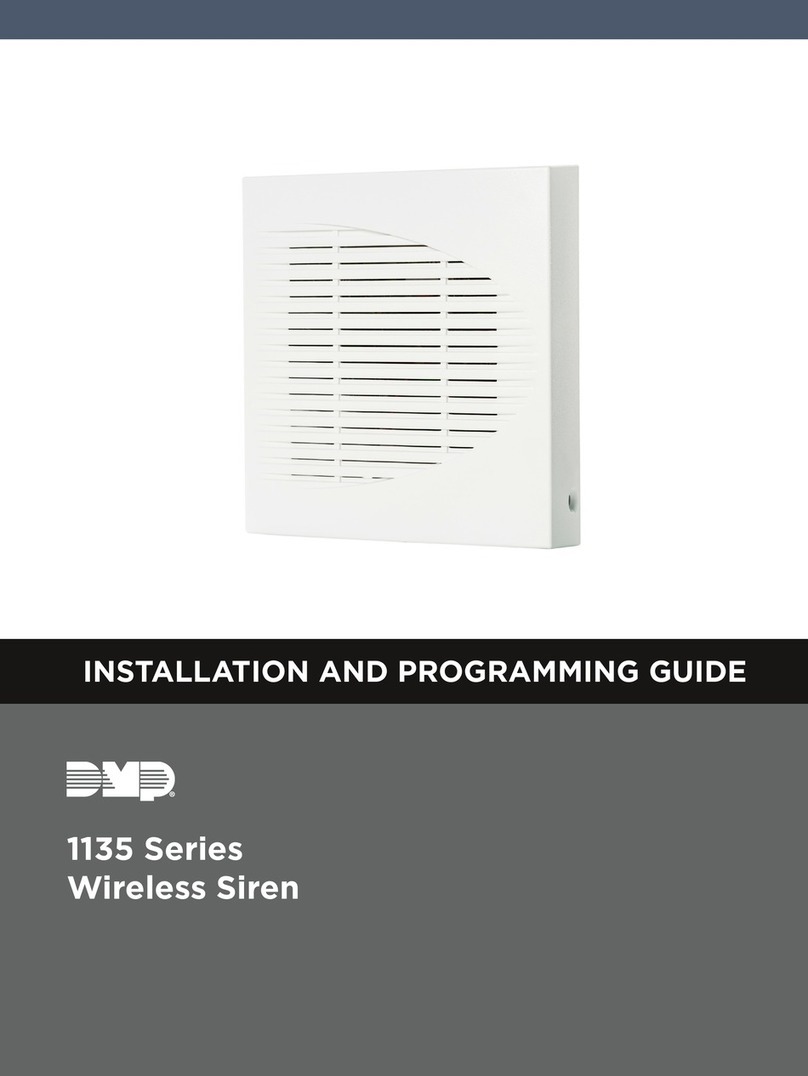
DMP Electronics
DMP Electronics 1135 Series Installation and programming guide

ADEMCO
ADEMCO Security Center 4160 user manual

Menvier Security
Menvier Security SD1 Installation and programming guide
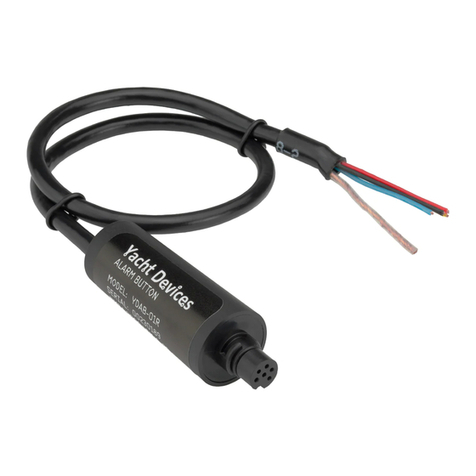
Yacht Devices
Yacht Devices YDAB-01 user manual

